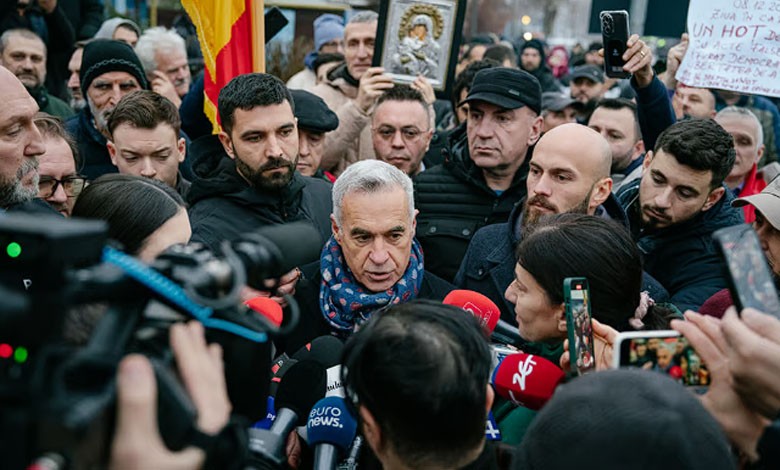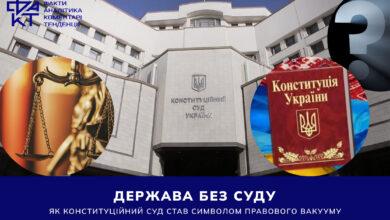TikTok and elections: how social networks have become a new battlefield

IA “FACT” already reported about how pro-Russian far-right politician Celin Georgescu, known for his anti-Western rhetoric and sympathies for Romanian fascists, unexpectedly entered the second round of elections in Romania in November. Despite its lack of awareness among the general public and the lack of support from traditional media and the establishment of one of the poorest countries in Europe, this “dark horse” has achieved success thanks to TikTok.
Georgescu had compete with centrist Elena Lasconi in the second round of the presidential race on December 8, but evidence that Russian “octopus tentacles” are involved in influence operations on TikTok forced Romania’s Constitutional Court to annul the election.
Currently, the world media are reported, that Romanian TikTok influencers who promoted the pro-Russian candidate Georgescu fled the country after fiscal audits of their participation in the election began.
Romanian authorities raided supporters of an ultra-nationalist candidate, detained mercenaries with illegal weapons, and confiscated $7 million in cryptocurrency associated with the candidate’s sponsor, Bohdan Peshir.
There is little doubt that TikTok influencers were paid to promote Georgescu’s nationalist rhetoric. Some influencers who left the country publicly acknowledged their involvement in the campaign, but denied knowledge of its pro-Russian bent. The European Commission is demanding the retention of TikTok data for investigations, while analysts have compared the scandal to operations in Moldova aimed at supporting pro-Russian forces.
Fool me, but so that I believe you, or TikTok as a modern tool of political communication
The use of digital space for political influence has become a common ingredient in the political kitchen of the world. The above-mentioned precedent with the vivid promotion of the avatar of a pro-Russian candidate in a popular social network illustrates several important trends inherent in the modern socio-political reality.
TikTok has become a platform for large-scale influence campaigns, which can have serious consequences for democracy. Support for pro-Russian candidates through social networks indicates the ease of external interference by aggressor countries in the affairs of democratic states. Identifying financial flows and links to organized crime shows how money can influence politics. Fortunately, the Romanian authorities and the European Commission responded proactively to the violations, which underscores the importance of transparency and legality of elections.
Here are a few examples that illustrate how online platforms are used to achieve various political goals.
TikTok, Facebook and Twitter as an arena for the promotion of fakes and digital protest
Thus, the 2016 elections in the USA showed how Internet networks have become a powerful tool for influencing politics. At the time, disinformation campaigns organized by other states, including Russia, spread fake news through Facebook and Twitter, influencing public opinion and voter decisions.
In 2020, social platforms once again became the center of political drama. Young people on TikTok organized a campaign against Donald Trump’s rallies, booking seats with no intention of showing up, leading to half-empty stadiums and damaging his reputation.
It is clear that online communities have become a weapon of information warfare and public influence. In 2016, they became a platform for manipulation and disinformation, and in 2020 – an arena of digital protest. Technology has changed the rules of the political game, proving that the struggle for power takes place not only in the stands, but also in the digital space.
The role of social networks in the promotion of Donald Trump in the 2024 presidential election cannot be underestimated. In particular, the social network X, owned by the famous billionaire Elon Musk, and the platform Truth Social, created by the media company Trump Media & Technology Group, have become key channels for spreading messages and mobilizing supporters of the Teflon Don.
To create deepfakes and disinformation intended to influence the political mood of American voters, artificial intelligence was actively used. Although OpenAI managed to prevent deepfakes with ChatGPT, fake videos continued to appear on social media, deepening the political divide.
It is also worth noting that Facebook, Twitter, and TikTok have been heavily used to spread political ads, memes, and videos aimed at supporting Trump. These platforms made it possible to target specific demographic groups, which increased the effectiveness of the campaign.
Interactive environments as a weapon of Arab Spring activists
During the Arab Spring (2010-2012), Facebook and Twitter helped activists organize protests and coordinate their actions. It was in the online space that strikers quickly shared information, talked about injustice and invited others to join the actions, which mobilized large groups of people and drew attention to protest actions around the world. Realizing the power of online communities, governments have begun to block access to platforms, censor or spread propaganda, and monitor activists.
Interactive environments have simultaneously become a weapon against regimes and a field for their reaction. They helped organize mass protests, but also provoked strong opposition from the authorities, leading to major changes in the region, as well as conflict and instability.
Protests in Hong Kong and the role of digital technologies
In 2019-2020, millions of people took to the streets to oppose the extradition bill and for broader democratic rights, and it was the digital space that became their main ally. Protesters coordinated their actions through Telegram, and videos of police brutality were shared on TikTok and Reddit to attract the attention of the global community.
In response, the Chinese government began discrediting the protesters through social media propaganda. Kermanychi of the Celestial Empire accused the demonstrators of violence and ties to foreign governments, trying to sow discord among them.
This conflict has shown that technology can be both a tool of freedom and a weapon of oppression. If activists used social networks for organizing, governments – for manipulation and control.
Hundreds of thousands of people, armed only with phones and determination, challenged one of the world’s most powerful governments. Although the outcome of the struggle remains uncertain, it has shown that even in the most difficult times, technology can become the voice of those trying to be silenced.
TikTok and WhatsApp as the main platforms to influence the minds of Brazilian voters
Brazil’s 2022 election campaign showed how social media can influence politics. TikTok and WhatsApp have become the main means of manipulating public opinion.
Before the elections, social networks were filled with fake news and videos directed against the candidates. Luis Inacio Lula da Silva, who was accused of mafia ties and corruption, suffered the most. Fake messages were sent on WhatsApp, which formed a negative image of the candidates and urged not to trust the election system. People received dozens of such messages every day and began to accept them as truth.
Fake news has fueled fear, anger and doubt by targeting religious beliefs, cultural values and patriotism. People shared these materials with family and friends without verifying their veracity.
Voters split into camps that hated each other more and more. The disinformation campaign cast doubt on the legitimacy of the election and further polarized the country. Lula da Silva eventually won, but the fakes left a deep mark on Brazilian society, deepening divisions and mistrust of the authorities.
The Brazilian election demonstrated how digital platforms can be used to manipulate democratic processes. Created to share ideas and communicate, TikTok and WhatsApp have become tools to spread lies that affect elections and the future of entire countries. It is a reminder that the fight for truth is becoming as important as the fight for votes.
Fridays for Future: TikTok and Instagram to fight for the future of the Earth
Youth climate movements, including Greta Thunberg’s Fridays for Future, are using TikTok and Instagram to fight for the future of the planet. Through these platforms, they organize strikes, draw attention to climate issues and pressure politicians.
TikTok allows you to create short, emotional videos that quickly go viral. Instagram is used for information campaigns and to unite activists under hashtags like #ClimateStrike.
Young people draw attention to environmental problems and force the authorities to act. They use social media to evoke an emotional response and show the real consequences of climate change. They prove that together you can change the world even in times of crisis.
The Role of TikTok, Instagram, and Twitter in Iran’s Women’s Rights Protests in 2022-2023
After the death of Mahsa Amini, a wave of outrage swept the country, and TikTok, Instagram and Twitter became the main tools to highlight the protests and the brutality of the Iranian authorities. The women posted videos of themselves removing their hijabs and speaking out against the repressive regime, drawing international attention.
However, the Iranian government has blocked access to social media in an attempt to suppress this powerful opposition. Despite this, protesters found ways to circumvent the lockdown and continued to share their stories, which resonated around the world. These events showed that even under severe pressure, the human voice and the power of social media can change the world.
TikTok, Instagram and YouTube: an infospace for the fight between conspiracy theories and the truth
The COVID-19 pandemic has become a test not only for medicine, but also a battlefield for the truth. Doctors fought for the lives of patients, and on the Internet there was a fight for people’s consciousness and beliefs. At that time, TikTok, Instagram and YouTube became the main space where true information competed with obscurantism.
Since the beginning of the pandemic, social networks have been filled with conspiracy theories. Some claimed that the virus was created in a laboratory, others that the pandemic was invented for control. Videos on TikTok broadcast “secret” treatments or called for the abandonment of masks, while videos on YouTube accused vaccines of “chipping”. Instagram was flooded with bright, but false pictures. People, scared and confused, started believing these fakes and spreading them. Misinformation sowed distrust of doctors, scientists and governments, creating a divide in society.
The flow of false information had serious consequences. People refused to wear masks, did not follow quarantine restrictions and avoided vaccination. This led to the rapid spread of the virus and the overloading of hospitals. Anti-vaccination sentiment intensified, and protests against government measures grew. Governments and scientists had to fight not only a viral pandemic, but also a mental one. Their efforts often could not match the speed of spread of fakes in social networks.
TikTok, Instagram, and YouTube have come under fire for failing to combat misinformation. While some platforms have started flagging or removing fake content, this has not been enough. Dangerous information has already spread like an avalanche and had a devastating effect.
Disinformation during the COVID-19 pandemic has shown how dangerous social media can be when used for manipulation. It was a reminder that in times of crisis, truthful information is as important as medicine. This experience made the world think: how can we protect ourselves from the flood of fakes, when the price of trusting a lie can be the lives of millions of people?
Social networks as a powerful weapon in the Russian-Ukrainian war
Finally, an example that resonates most in the heart of each of us. The Russian-Ukrainian war, which in fact has been going on for 10 years, has become not only an armed conflict, but also an informational one. Social networks have turned into a real weapon: through TikTok, Facebook and Twitter, the aggressor country has spread propaganda, fakes and fear, trying to justify its crimes.
Instead, Ukraine answered with the truth. In videos, posts and stories, Ukrainians showed the heroism, suffering and indomitability of the nation. Campaigns raised funds for arms and support for military personnel, millions of people heard the truth, and the world saw the true face of war. It was a battle between lies and truth, fear and dignity. Ukraine proved that even in dark times, the power of truth can change history.
…Social networks have become a key player in modern politics, influencing the consciousness of the masses, organizing movements and determining the course of events in the world. They have become a powerful weapon capable of simultaneously supporting democracy and helping authoritarian regimes come to power. In this new reality, social networks are not just a tool, but a battlefield for the future of society.
Tetyana Viktorova





